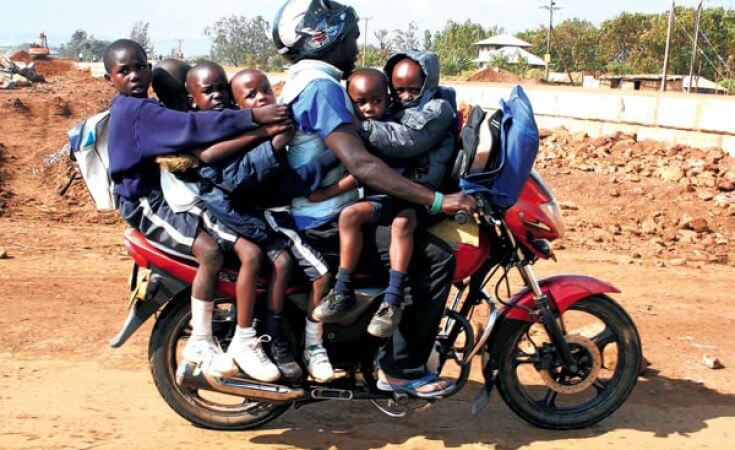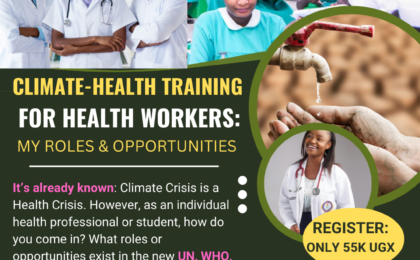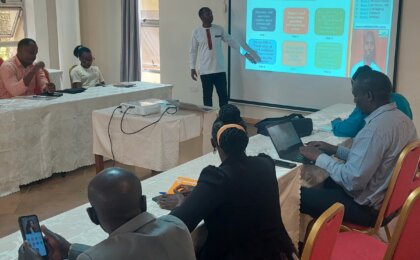Ugandan lives claimed by accidents: Do Ugandans deserve saving?
According to Uganda Police’s annual crime report (2017), 13,244 accidents happened on our roads in the year of 2017; 3,051 died, 6,530 got serious injuries and 3,663 sustained minor injuries. As highlighted by the same report, this was a reduction by about 8.6% from 14,474 accidents in 2016. Wait! Did you know that the number of people who die (end up dying=fatal) keep increasing overtime? I will answer this later on.
Are you already thinking that these ‘thousands’ are many? Well, we have actually improved. For example, we had about 20,522 accidents in 2008, which increased to about 22,699 accidents in 2009 before subsiding to 17,848 in 2014, and then rising to 18,426 in 2015; things have not been well for a long time!
READ THIS TOO: Top 10 Health Crises other than covid-19 in Uganda

The world health organization’s report on Road Traffic Accidents states that about 1.25 million accidents happen every year with most of them happening in low-income countries (WHO, 2015). Actually, Nnajjuna (2013) cites WHO (2014) recorded report of 90% fatality rate of all accidents to be happening in middle and low-income countries. Well, talking about fatality rates, I am sorry to inform you that, just yesterday (Saturday, 24th November 2018), more than 30 people have already succumbed their lives to a boat accident on Lake Victoria and many bodies are still missing.
Talking about accidents on waters, the one of yesterday isn’t the first one; according to 2013 annual crime report, drowning cases increased by 27% with deaths toll increase to 47 cases in 2013 from 27 cases in 2012. In 2014, reports New Vision, more than 80 people lost their lives on L. Albert as they were cruising to DRC (Zaire). While reporting on same 2014 incident, Daily Monitor takes us back and reminds us of similar water transport related accidents here in Uganda;
December 2004: 22 died on L. Albert
February 2004: 45 people died (Nebbi district; possibly, on the same waters)
July 2003: 20 died (Hoima District)
September 2000: 41 died (Kayonga)
May 1998: 10 died (Ntoroko district on their way to Kibale)
1997: 65 died (Nebbi)
August 2010: 70 people died (Saturday Night on L. Albert)
February 2010: 4 UPDF soldiers drowned on L. Albert
Again, August 2010: 23 bodies recovered on same L. Albert
Source: Daily Monitor, March 2014; open the article here
From the above highlighted statistics, it is clear we have really suffered accidents (both water and road traffic accidents) and it seems we are not going anywhere; accidents are still gonna claim our lives.
NB: I did not look into air transport crashes for one single reason; we do not have air transport in Uganda (I am kidding!). Anyway, World Bank (2011) says that, in most low-income countries like Uganda, Road transport almost does all the transportation (about 95% of country’s goods and 99% of passengers).
What is the cause of Accidents? Who are the perpetrators?
According to experts, causes of accidents (specifically, RTA) can be attributed to the driver or human error (80-90% as suggested by Peltzer, 2008), the vehicle, and environment factors. For example, as cited by Nnajjuna (2013), Bishai and other friends (Bishai et al., 2008) reported speeding to cause 19% of accidents, breach of license (18%), dangerous loading (16%), and careless driving (14%). Nnajjuna (2013) again pulls out Ministry of Works and Transport’s 2012 say; Uganda accidents are due to human error (80%), mechanical condition (10%), road conditions (5%) and environmental factors (5%). What does our current police reports say? Let us see.
The 2017 police report on crime is detailed with some relevant information about road traffic accidents in Uganda. Concerning the causes, driver-related causes still rank as number one (that is careless driving contributed about 42% of all accidents and reckless driving had about 34%). Careless pedestrians who contributed about 5% of total crashes then follow these.
Other relevant findings are; men are more involved in accidents than women (about 70% of men compared to 30% females), May registered highest deaths and February registered the lowest in 2017. Pedestrians and passengers top the list of those most vulnerable. Foreign vehicles are involved in accidents more than any other category except private. Motorbikes still represent the group of vehicles most involved in accidents. For some reasons, more youths got involved than adolescents and old.
| Even if total accidents reduced from more than 14,000 in 2016 to about 13,000 in 2017, the number of people who die due to accidents seem to be increasing! |
Despite the reduction in total accidents from more than 14,000 in 2016 to about 13,000 in 2017, the number of people who die due to accidents seem to be increasing. First, ‘from 660 in 1991 to 2,954 in 2010’ (Sebaggala et al., 2014) and, secondly, from 2,518 in 2014 to 2,749 in 2015 (Police Crime Report, 2015) and, lastly, from 2,999 in 2016 to 3,051 in 2017 (Police Crime Report, 2017). Why is fatality on rise with reduction in total accidents?
For the few cases of water transport accidents, overloading has always been the reason at the forefront. According to both Daily Monitor and New Vision, our recent tragic of boat capsizing on L. Vctoria (by the way, as I type this, updates say that more than 31 people are confirmed dead), the 2010, and the 2014 boat accidents were due to overloading and, of course, coupled with deadly unhealthy boats.
So, what causes our accidents? Pretty everything! However, in most cases, it is all about us (either the driver or the vehicle users). Has anything been done about this? By the way, we are not the only ones! Yes, Tanzania had it too and you know what! The Tanzania’s ferry was carrying 300 people in excess. Can you imagine that? Well, it happened in DRC still in this same year and it was due to overloading. It is as if the crime of ‘overloading’ is normal to both water and road transport here in Uganda, East Africa, and Africa. As Timothy Kalyegila always say, Africans have a much bigger problem than we ever thought!
What are the costs of these accidents?
Seriously, let us sideline statistics for now and put it in our own easy words; first, we lose thousands of lives every year (and young lives who are educated, productive, and, yeah, needed by a country and their homes).
Secondly, we lose quality life for those who are severely injured; they are burdens to their homes and healthcare system, less productive, dependent, and so much more.
Third, we lose property (cars and boats involved in accident), money, tourism (no one wants to tour on waters where ‘everybody’ dies in boat accidents) and so much more. Really, what costs or effects come out of accidents? My 8-months boy can answer that!
I know most of us do not understand the cost unless it is in monetary terms and so let us pick some statistics (this is not a credit; it is a sickness we are trying to cure at SWAPafrica). In 2014, Sebaggala and four other friends did a study on ‘the cost of motorcycle accidents in Uganda’ and the results were alarming. ‘Hear’ it in their own words;
It costs approximately 7 million shillings (or 2800 USD) to treat a boda boda accident victim who is severely injured. Based on annual police statistics on motorcycle accidents for 2012; the Ugandan economy losses more than UGX 3 billion (1.2m USD) value of output due to days away from productive work as result of severe injuries and death. Likewise, the cost of motorcycle repairs amounted to UGX 350 million (140,000 USD) (Sebaggala et al., 2014, Page 2).
The above is about motorcycles only. What if we considered the total cost of all forms of accidents (all forms of vehicles and all forms of transport), including the ones in relation to water transport!
Have we done anything about this?
Yeah, Fika Salama is one of the famous ones. According to Police’s annual crime report (2017), measures have included sensitization, Fika Salam checkpoints, charging ESP defaulters in terms of money (more than 4 billion shillings recovered), arresting corrupt officers who take bribes instead of enforcing safety measures, check on forged driving permits using technology (galaxy tabs) and so much more. In that same document, many recommendations or future government’s plans to reduced accidents are suggested.
However, what you and I agree on is this; accidents (whether on land or on water) haven’t gone anywhere? Where is the problem?
The problem: Ugandans themselves!
Recently, there has been influx of technologically powered transport companies like Uber, Taxify, and Safe Boda. Fortunately, most of our usual youths who drive for or with these companies are a little bit adherent to rules and regulations (where they exist). For example, many boda boda riders usually have two helmets; one for the rider and the one for the client. However, as I write this, it very common to see Ugandans riding with safe boda, uber or taxify and, yeah, their helmets are not on. I mean, Ugandans simply do not want safety even when it is provided! It is not in a Ugandan’s blood to tie a seat belt even when the car has it!
I mean, why would you ‘cruise’ with your loved wife and children on a Ugandan boat even without the ‘fake’ life jacket? Why would you hire #SafeBoda and not put on your helmet when you have paid for it? Of course, I am not saying that changing our attitude and ourselves can take away these accidents, no. However, we communicate our plea by our actions; this way, we reveal our desire to be safe and alive if any chance shows up. In most cases, in a corrupt and failed system like ours, you will not have a choice (I rarely have a choice for this kind of safety) but use one opportunity you got to show respect and responsibility for life; just do it.
Do Ugandans really deserve saving? Yes, they do! However, it is not because they deserve it; it is because they need it. It is on this point I really think the government has failed us completely. In my view, people should be forced to be safe if they cannot choose that for themselves (for example, forcing us to wear our helmets, especially if they are available).
Do not be a statistic
| ‘At one point, we were threatened that accidents shall come next to HIV/AIDS in killing Ugandans (or the world dwellers) if nothing better is done’ (WHO, 2005) |



